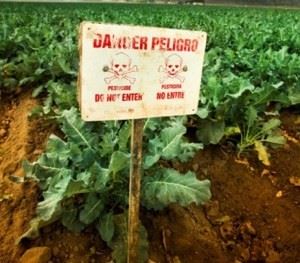 Parkinson’s disease is second only to Alzheimer’s as the world’s most common neurodegenerative disorder. Parkinson’s affects nerve cells in the part of the mid-brain responsible for muscle movement (the substantia nigra). Symptoms include tremors, rigidity, slow movements, balance problems. Parkinson’s patients often show signs of depression. They may develop cognitive problems that include dementia. Though PD may be disabling, it often advances slowly, and most diagnosed with Parkinson’s disease suffer a minor disability.
Parkinson’s disease is second only to Alzheimer’s as the world’s most common neurodegenerative disorder. Parkinson’s affects nerve cells in the part of the mid-brain responsible for muscle movement (the substantia nigra). Symptoms include tremors, rigidity, slow movements, balance problems. Parkinson’s patients often show signs of depression. They may develop cognitive problems that include dementia. Though PD may be disabling, it often advances slowly, and most diagnosed with Parkinson’s disease suffer a minor disability.Experts have long believed Parkinson’s disease risk rises with herbicide and pesticide exposure. Italian researchers who reviewed 104 studies from around the world concluded that exposure to pesticides, bug and weed killers and solvents appears to be associated with a 33 to 80 percent increased risk of developing PD. The investigators also reported that one’s PD risk doubled with exposure to specific chemical compounds that included paraquat, a weed killer, and two fungicides — maneb and mancozeb.
How do we know Paraquat can increase the Risk of developing Parkinsons Disease?
Research over the last two decades has shown a link between Parkinsons disease and Paraquat exposure. Because of Paraquat’s known dangers, its use has long been restricted to certified applicators.
Parkinsons disease research in the last decade includes two particularly strong studies that involve humans: a 2011 NIH study, and a 2013 Italian meta-analysis. Both provide persuasive evidence Parkinsons Disease risk is increased in farmers and people who live near near Paraquat spraying operations.
A scientist in the epidemiology branch of the NIH, Freya Kamel, told the New York Times that research regarding the link between paraquat and Parkinsons disease is persuasive.
Paraquat Parkinsons Link
Research into a paraquat Parkinsons link includes a 2013 study from UCLA which confirmed paraquat exposure increases the risk of developing Parkinsons disease.
A team of UCLA’s Fielding School of Public Health researchers studied 357 Parkinsons disease cases, along with 754 control subject adults from Central California. The team found that people living closer to farms sprayed with paraquat increased their risk of developing Parkinsons by 36 percent.
Head Injuries also Matter
The study also found that people exposed to paraquat who also suffered a head injury tripled their chances of developing Parkinson’s disease.
Researchers from Mexico’s Unidad de Medicina Familiar also found a positive link between paraquat exposure and Parkinson’s disease.
What is Paraquat?
Paraquat is N,N-dimethyl-4,4-bipyridinium dichloride, a chemical agent used primarily as an herbicide in no-till farming. (Please note: Since EPA classifies herbicides as pesticides, herbicide is a misleading euphemism). Paraquat is most often used as a spray, as some farmers find it less laborious than discing the earth or tilling it the old fashioned way. Paraquat use has increased in the last decade as more weeds have become resistant to Monsanto’s RoundUp. Paraquat use was estimated to be almost 10 million pounds annually in 2017 in the USA.
Paraquat Lethal Dosage
Paraquat is so dangerous that ingesting a dose of just 2.5 grams can be lethal. Consequently, the poison has been used by many suicides or been the culprit in many accidental deaths.
While paraquat’s immediate effects can be inarguably deadly, paraquat exposure may pose an even greater threat to farmers, pesticide applicators, tank fillers/mixers, families living near applications.
Does Exposure to Pesticides, Herbicides, Other Pollutants Increase Parkinson’s Disease Risk?
An 89-study meta analysis that included six prospective and 83 case-control studies found exposure to pesticides could increase PD risk as much as 80%. Exposure to paraquat or to fungicides maneb or mancozeb can be particularly toxic, increasing PD risk almost 2-fold. Many of the agents studied are no longer used in the US and Europe; though some are still used in countries with fewer civilized protections from agri-poison corporations.
In case-control studies, PD was associated with exposure to any type of pesticide, herbicide, insecticide, and solvent. Risks ranged from 33% to 80%. Increased PD risk was also linked with proxy conditions of exposure to organic pollutants such as farming, well-water drinking, and rural living. Risk seemed to increase with length of exposure.
No One Definitive Cause of Parkinson’s
No biomarkers or objective screening tests indicate one has Parkinson’s. Some medical experts have shown, instead, a constellation of factors linked to PD.
Many experts believe the disease may sometimes stem from a mixture of genetic and environmental factors, but that most cases of Parkinson’s are “idiopathic” —
The average age of onset of Parkinson’s disease is 60 years old, and men are more likely than women to develop PD.
In addition, those with a parent or sibling affected by PD have an approximately two times greater chance of developing it themselves.
RELATED
- Paraquat Lawsuits Pending
- Parkinson’s Lawsuit – Pesticide Lawyer
- Paraquat Linked to Parkinson’s Disease

by Matthews & Associates




